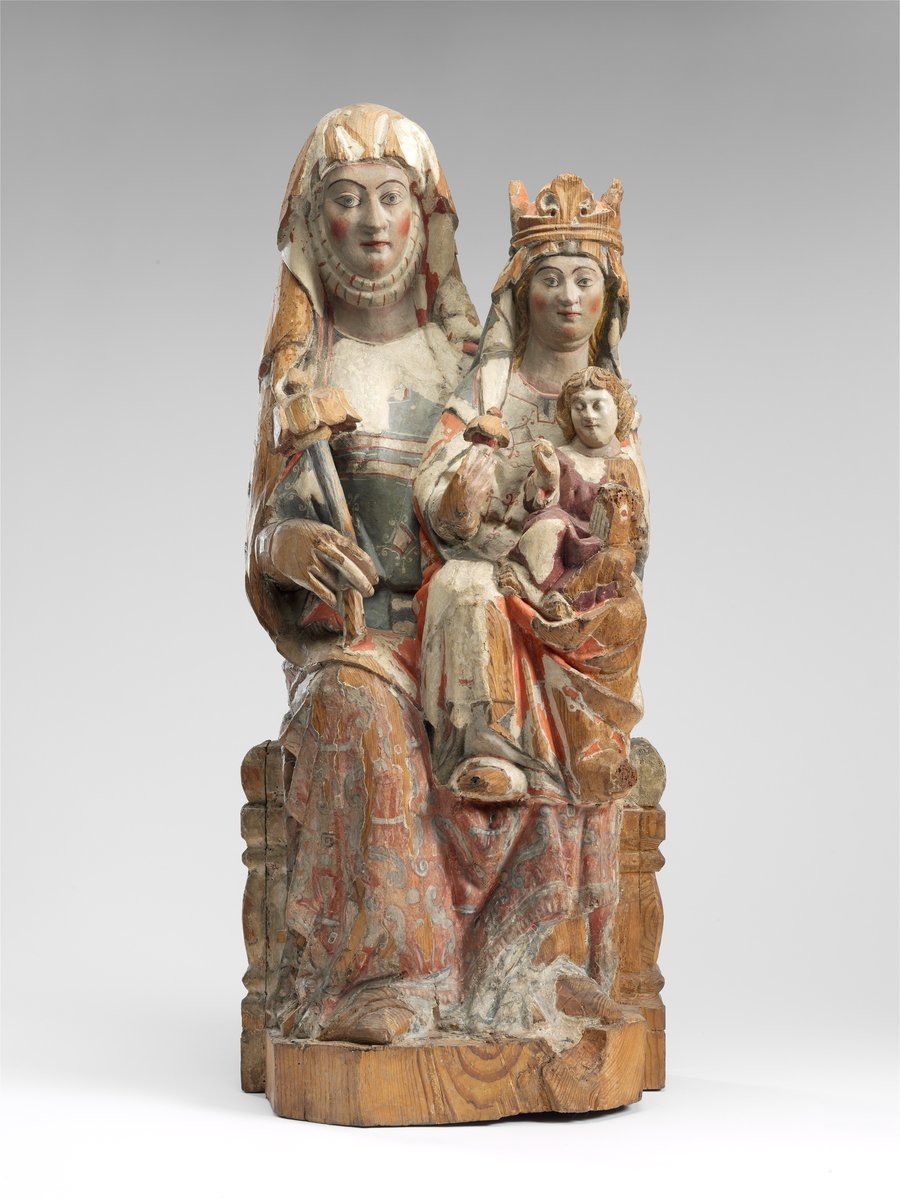
Saint Anne with the Virgin and Child
Sculptures
| Artist | |
|---|---|
| Culture | Austrian |
| Date | 1450–1460 |
| Object type | wooden sculpture |
| Medium, technique | carved and painted limewood |
| Dimensions | 172 x 52 x 32 cm |
| Inventory number | 84.2 |
| Collection | Sculptures |
| On view | This artwork is not on display |
This life-size wooden statue was once the central figure of the high altar of a Viennese church. The iconographic type of the statue combines the representation of the Virgin and Child with the attributes of the Apocalyptic Woman – such as the crescent moon under her feet. The type appeared in the art of Central Europe at the end of the14th century. Its sculptor follows the style of the great innovator of the early 15th century, Hans Multscher of Swabia, but on the slender, fragile figure of Mary the effects of the half century earlier Soft Style are also felt.
Miriam Szőcs
Balogh, Jolán – Szmodisné Eszláry, Éva, Katalog der ausländischen Bildwerke des Museums der bildenden Künste in Budapest, 4.-18. Jahrhundert, Bd. 3. Neuerwerbungen, Akadémiai Kiadó, Budapest, 1994, p. 53-55., no. 32.
Szmodisné Eszláry, Éva, A Régi Szoborgyűjtemény kincsei, Szépművészeti Múzeum, Budapest, 1994, p. 48-49, ill. 40.
Szmodisné Eszláry, Éva, The treasures of the Old Sculpture collection, Szépművészeti Múzeum, Budapest, 1994, p. 48-49.
The Museum of Fine Arts Budapest: guide, Museum of Fine Arts, Budapest, 2006, p. 148-149, no. 197.
Szépművészeti Múzeum: Remekművek az ókortól napjainkig. 100 év, Szépművészeti Múzeum, Budapest, 2006, no. 28.
Museum of Fine Arts, Budapest: Masterpieces from the Collection, Museum of Fine Arts, Budapest, 2006, no. 28.
Szépművészeti Múzeum: Remekművek az ókortól a 18. század végéig, Szépművészeti Múzeum, Budapest, 2019, p. 94-95.
Museum of Fine Arts: Highlights from the Collection, Museum of Fine Arts, Budapest, 2019, p. 94-95.
Museum of Fine Arts: highlights from the collection, Szépművészeti Múzeum, Budapest, 2019, p. 94-95.
Múzeumi kalauz: Vezető a Szépművészeti Múzeum régi gyűjteményeihez, Szépművészeti Múzeum, Budapest, 2021, p. 81.
Museum Guide: Old collections of the Museum of Fine Arts, Budapest, Museum of Fine Arts, Budapest, 2021, p. 81.
This record is subject to revision due to ongoing research.